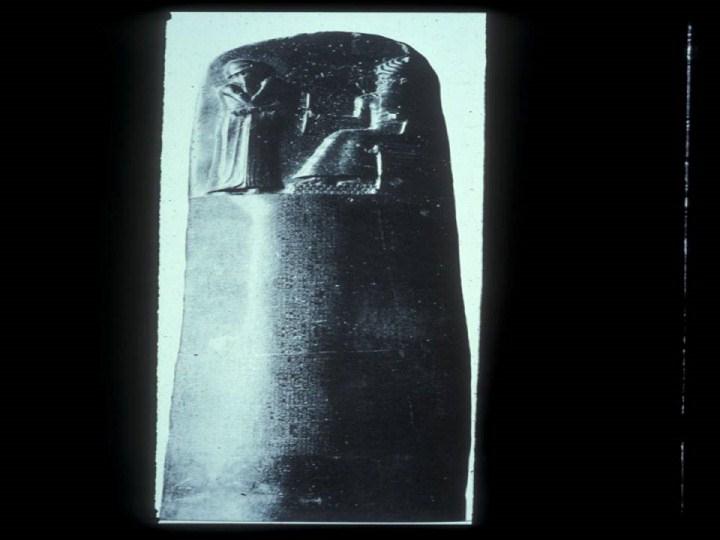| front |1 |2 |3 |4 |5 |6 |7 |8 |9 |10 |11 |12 |13 |14 |15 |16 |17 |18 |19 |20 |21 |22 |23 |24 |25 |26 |27 |28 |29 |30 |31 |32 |33 |34 |35 |36 |37 |38 |39 |40 |41 |42 |review |
 |
We cannot leave Mesopotamian medicine and the ashipu without looking at his handling of surgery. We have little information on the actual surgical practices, with the exception of one of the great documents in the history of mankind, Hammurabi's famous code of laws from circa 1780 B.C. It was found engraved on this black stone nearly eight feet in height, containing 282 laws. Several of these laws laid down the payments and punishments the ashipu could expect if he practiced surgery. I'll only quote two of these laws to illustrate both the profitable and the dangerous side of surgery with which the ashipu had to contended. "if a physician performed a major operation on a seignoir with a bronze lancet and has saved the seignior's life;... he shall receive 10 shekels of silver." This amount could purchase the services of a carpenter for 450 working days. Least we think the ashipu had it financially easy, this second quote shows the penalty for surgical failure: "if a physician performed a major operation on a seignior with a bronze lancet and has caused the seignor’s death... they shall cut off his hand." It is impossible to know if judges imposed this stern malpractice judgment, as no records have been located. We cannot leave Mesopotamian medicine and the ashipu without looking at his handling of surgery. We have little information on the actual surgical practices, with the exception of one of the great documents in the history of mankind, Hammurabi's famous code of laws from circa 1780 B.C. It was found engraved on this black stone nearly eight feet in height, containing 282 laws. Several of these laws laid down the payments and punishments the ashipu could expect if he practiced surgery. I'll only quote two of these laws to illustrate both the profitable and the dangerous side of surgery with which the ashipu had to contended. "if a physician performed a major operation on a seignoir with a bronze lancet and has saved the seignior's life;... he shall receive 10 shekels of silver." This amount could purchase the services of a carpenter for 450 working days. Least we think the ashipu had it financially easy, this second quote shows the penalty for surgical failure: "if a physician performed a major operation on a seignior with a bronze lancet and has caused the seignor’s death... they shall cut off his hand." It is impossible to know if judges imposed this stern malpractice judgment, as no records have been located. |